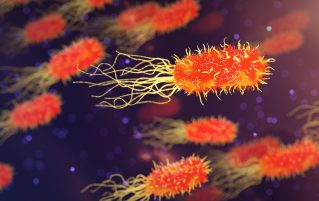

Microscopes have been around for hundreds of years, and enable us to see microorganisms such as bacteria. They are so small that you could fit hundreds of them on a full stop! Microorganisms are everywhere – inside your body, on your skin and all around you. We could not live without them and for most of the time they do not harm us.
It is around 3.5 billion years ago that they first appeared on earth, and they have been incredibly important ever since. They are so diverse that they can survive in extremes of heat, cold, pressure and acidity, often in places where nothing else could live. Apparently there can be between 10,000 and 10 million bacteria on each hand, which can double after you have been to the toilet!! Scientists have also found up to 2368 species of bacteria which can live in your belly button! But don’t worry – they were not all found in one belly button. Some belly buttons have only around 29 species in there – although some have as many as 107!!
GCSE scientists – you need to understand how to use a microscope. For help with this try our guide “How to work with Microscopes”. In this guide is an explanation of how to use microscopes as well as how to calculate magnification. There is also information on the difference between electron and light microscopes. It includes questions to try, and answers to check your understanding.
Click on the picture below to see the guide.
If you found this useful and think you would benefit from some additional help, please contact us.
We welcome guest bloggers.
